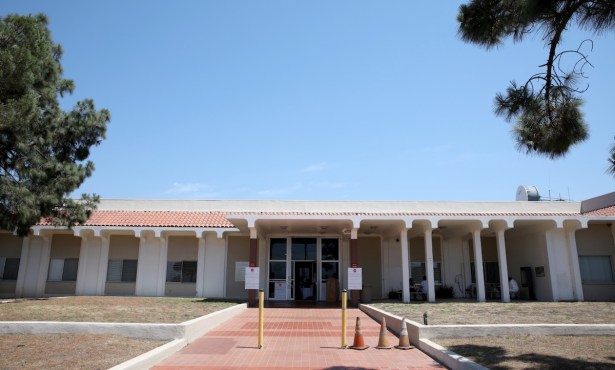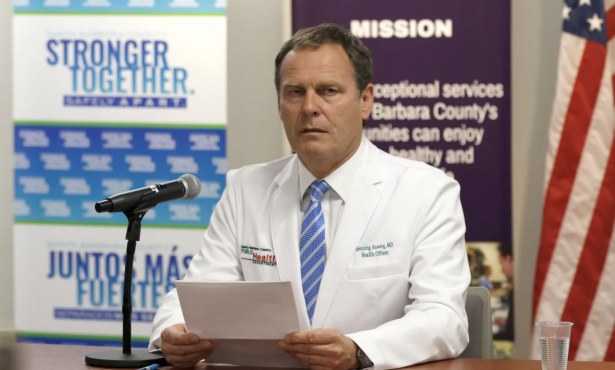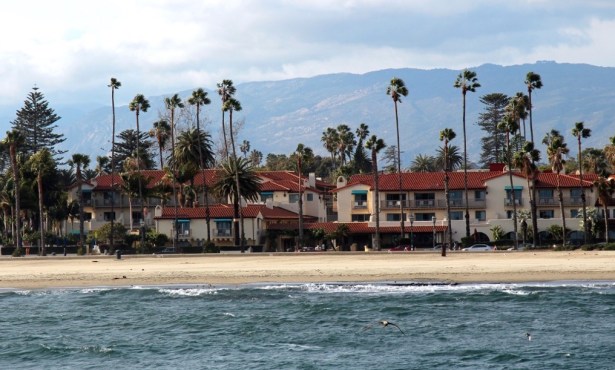Prying the Lid Off 45-Year-Old Cold Case
Santa Barbara County Sheriff’s Office Reexamining 1975 Murder of Paul Ornelas

The last words Paul Ornelas would say to his brother John were, “I’ll be back.”
As it happened, he never was.
The body of Paul Anthony Ornelas was found early the next morning along the railroad tracks near San Marcos High School. The back of his skull had been bashed in. Blunt force trauma with a blunt object. The wound was so deep, it took three inches of cotton to fill it.
Paul Ornelas was 15 years old at the time of his murder. His brother John was just 14. All this happened a long time ago — June 21, 1975, to be exact. The night before was a Friday. John and Paul had been at party on Wentworth Avenue on the city’s lower Westside. John Ornelas remembers begging his brother not to go.
“I had a bad feeling,” he recalled. “That was the last I saw of him.”

Like a lot of murders, this one never got solved. Early this April — 45 years later — the Santa Barbara Sheriff’s Office issued a press release announcing that it had officially reopened the Ornelas murder case. Press releases like that don’t happen every day. In fact, they never happen at all.
In the intervening 45 years, John Ornelas graduated from Santa Barbara High School, got a job with the City of Santa Barbara’s water department, married, had two sons, divorced, served on the Michael Jackson Grand Jury, fell in love again, retired, and then took another job working as a pipe inspector at the Glen Annie Reservoir in Goleta. Life has been good. But throughout all the years, Ornelas said, he’s carried around “a big hole in his heart.”
He still does.
“We always wanted answers, but we never could get any,” he said, speaking for his entire family. “We could never get over the fact someone killed our brother and there were no answers.” The questions don’t go away. “How could someone do something so cold and cowardly and still live with themselves?” he asked. “Why would they take the life of such a young man — were they vindictive? Or jealous?”
Over the years, Ornelas became persistence personified, contacting each of the successive detectives assigned to solve his brother’s murder. “They always told me there were things they couldn’t tell me,” he recalled. “They said it might jeopardize the case.” Ornelas got that. But like many murder victims’ family members, he got tired of all the waiting. “I was getting frustrated,” he said.
Several months ago, Ornelas got a call from Detective Matt Maxwell of the department’s Major Crimes unit. He announced that he’d be taking over the case. “He said, ‘John, you’ve been patient for all these years,’” Ornelas recalled. “‘I don’t know how I would have acted.’”
Detective Maxwell — with five years at the Sheriff’s Department and 15 years total in law enforcement — soon found himself working under the tutelage of Lieutenant Jeffrey McDonald. Working a cold case, Maxwell said, typically involves “lots of interviews, a lot of re-interviews, and a lot of looking over the forensic evidence.” Looking over the past reports, he could see that the original detectives worked the case hard. For three years. “It was a big deal back then,” he said. “A very big deal.”
Maybe new avenues of inquiry will emerge. Definitely there has been new technology, particularly a new rapid DNA testing machine. The ANDE, made by a company out of Colorado, is a big metal box that hums like a loud air compressor when in use. Designed for wartime use, it can be dropped out of airplanes and survive intact. Its purpose is to identify bodies that have been blown up or burned beyond recognition.
It was first tested in civilian use during the hellacious Camp Fire of 2018, during which 85 Northern California residents were wiped out by the flames. Sheriff’s Lieutenant Eric Raney saw a presentation on ANDE’s usefulness in that fire, so when the Conception dive boat went up in flames off Santa Barbara a year and a half ago, killing 34 crew and passengers, Raney asked his counterparts in Sacramento to loan their machine. For a coroner’s office scrambling to identify a mass of charred bodies, ANDE proved to be a game changer. In that case, families received the cold comfort of getting the bad news sooner rather than having to wait weeks — perhaps months even — to have their worst fears realized. “That’s when I fell in love with the instrument,” said Sergeant Jarrett Morris of the coroner’s office.
Based on that experience, the Santa Barbara Sheriff’s Office bought one of their own ANDE machines at a cost of $125,000. When a Sikorsky helicopter crashed into a Calabasas hillside on January 26, 2020, leaving nine badly mangled bodies among the wreckage, Santa Barbara sent its ANDE down to Los Angeles County Medical Examiner’s office. That was how the world learned that Laker great Kobe Bryant, his daughter, and seven others were on board.
The new technology allows investigators to make DNA matches using much smaller DNA strands. No longer are DNA mother lodes like blood, semen, or saliva required. Workable strands can now be obtained from a simple touch on a steering wheel. And it’s much faster. Matches that used to take weeks now can be obtained in a matter of a few hours.
John Ornelas is third-generation Santa Barbara; he grew up in the Ladera Apartments on the city’s Westside, the youngest of eight kids. His brother Paul was exactly 12 months older. They did everything together. The family’s path was not easy. Ornelas’s father left early on. His mother, Pauline Ornelas-Jaramillo, worked as a certified nursing assistant first at Santa Barbara’s old General Hospital and then later at an acute care nursing home. She had her hands full. John’s older brother Vincent was drafted into the military and spent two years in Vietnam. That was rough on the family, but he made it home okay. Vince would later become a martial arts specialist, teaching cops and Sheriff’s deputies the fine points of controlled mayhem, and then worked in juvenile hall for the Probation Department.
The family moved to Oxnard for a while. John and Paul — Johnny and Paulie — played Little League baseball together for the Hueneme Pirates. Paul, a lefty, played first base. As a batter, John remembered his brother as a real “ripper.” After the games, the two boys would walk home, sauntering down J Street, still wearing their gray woolen baseball uniforms, the kind with the stirrups. In one hand they’d hold a deep-fried burrito, in the other a large Coke. Paul was tall, strong, outgoing, and handsome. His looks were decidedly not lost on the girls. “He was really charming,” Ornelas said of his brother. “Really charming.”
The two got into their fair share of young dude trouble. In 1975, both would find themselves sent to Los Prietos Boys Camp for about half a year. “We weren’t bad, but we weren’t perfect either,” Ornelas confided. “We didn’t go to school all the time, we partied, we were a little out of control sometimes, things like that.” At the camp, the two Ornelas brothers looked after each other. Always close, they got closer still in the six months they spent at the camp. Paul also studied restaurant management while there, attending classes at La Colina Junior High School. He was very good at that, too. “He’d have been a great businessman if he lived,” Ornelas said. “He had the personality and the temperament. He could connect with anybody.”
Everything seemed so promising.
Then June 21 happened.
John Ornelas remembers the Westside party. At the time, he’d been out of the camp just one week. His brother Paul — out on leave — was to be released one week later. They were celebrating freedom. He remembers going out to use the restroom. When he came back, Paul was just taking off.
“I’ll be back,” Paul Ornelas declared.
John would spend the night at his sister’s house in Santa Barbara. Their mother would show up the next morning from Oxnard. Another sister was there, too. John remembers the knock on the door and the Sheriff’s deputies showing up to deliver the bad news.
“I was devastated,” he said, but for his mom, it was even worse. “It took everything she had and just broke her,” he recalled. “I’ll never forget the look on her face. They may as well have grabbed her heart right out of her rib cage. They never put it back.”
Pauline Ornelas was 40 years old the night her son was killed.
John credits his older brother Vincent for keeping the family together. At the time, John Ornelas — fresh out of boys’ camp — figured he’d be living with friends in Goleta. His big brother Vincent brought Ornelas back to earth, making him part of his own family. “‘This is your home,’” he told John. Four years later, John graduated from Santa Barbara High School. He was on the football team. He was focused. “I was the only one in my immediate family to graduate,” he noted.
Ornelas’s brother Vincent died suddenly in 2015. Today, only two of the eight Ornelas kids are still alive. The other surviving sibling, a brother, suffers from dementia. John Ornelas is the last Ornelas standing.
“I made a promise I was going to find out what happened,” he said. “I made a promise we would find answers, that we would see justice done.”
Closure, like grief, comes in many forms. “Their grieving has affected the family for years,” said Detective Maxwell. But even when crimes gets solved, “sometimes, it’s a big weight lifted,” he said, “but sometimes it’s never quite enough.”
For John Ornelas, it all remains very much an open question. He’s still not sure what got the case reopened, but he is hoping it’s because the detectives have something. If they do, they still can’t tell him. But he’s confident they mean business.
Forty-five years ago, he noted, there was no social media. Now the echoes are coming back on him with a vengeance. “I can’t believe this is happening. Now I’m getting caught up in the moment all over again,” he said. “Man, it was crazy.”
To keep himself grounded, John Ornelas prays. “I just ask God to give me the strength and courage to keep going so we can see justice for this family.”
Support the Santa Barbara Independent through a long-term or a single contribution.




You must be logged in to post a comment.